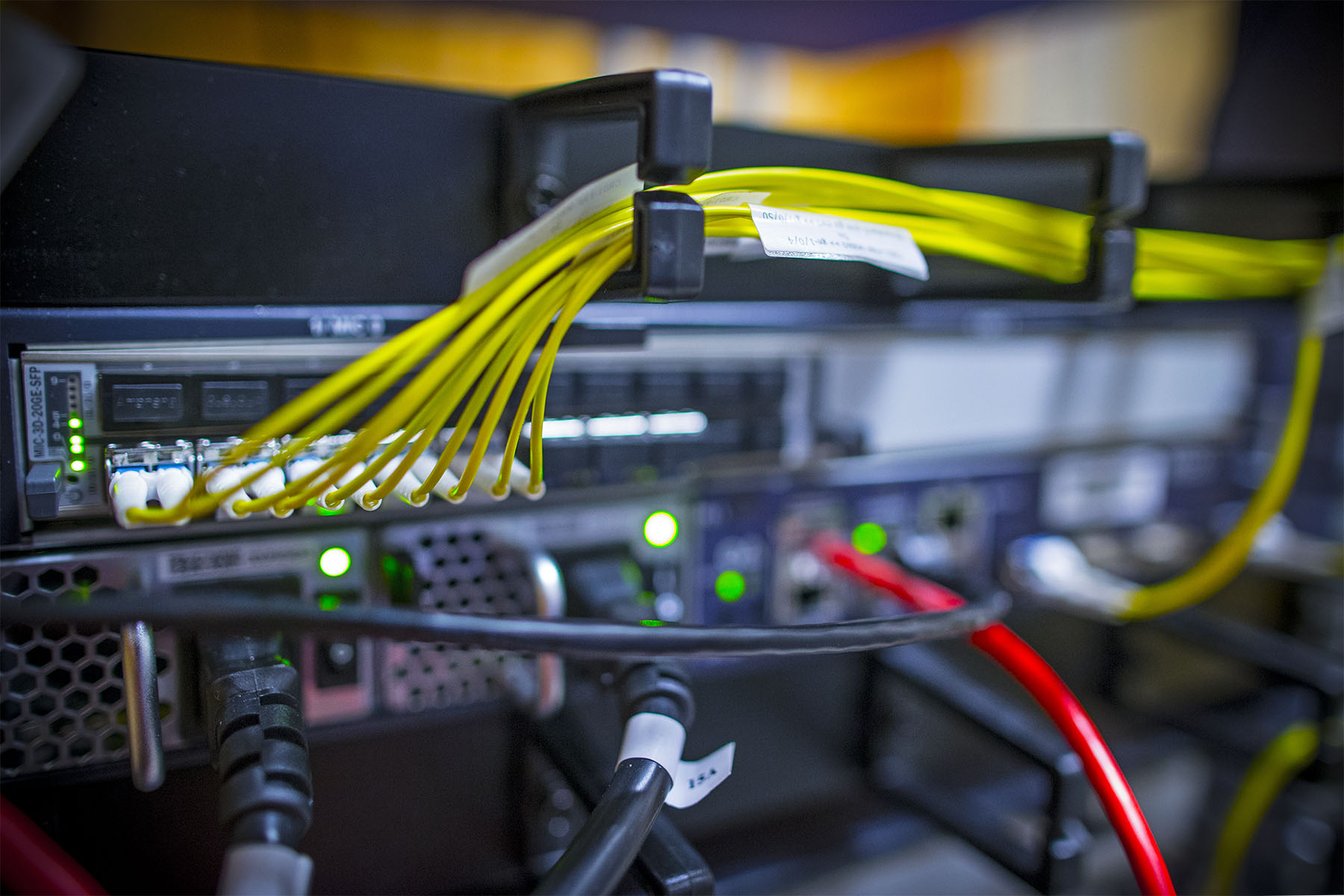Among the features of the University of Virginia’s new strategic plan, currently nearing completion, is an effort to enhance, further develop and optimize its research infrastructure and services. Another is to hire a cadre of outstanding faculty in the next few years to serve as a new generation of leaders in research, innovation, scholarship and the creative arts. Some of these faculty will pursue research in Big Data, another area of focus in the strategic plan.
The University is gearing up for these enhancements by upgrading its computing “core network,” the pipeline for information exchange between sub-networks that connect the more than 300 buildings at the University with each other and the rest of the world. The core network is the electronic path that underlies Internet and intranet services, sort of the electronic central circulatory system for the University.
“The new core will allow 10 times the speed of the old one, with the ability to go much higher than that,” said Jason Weinstein, senior director of enterprise infrastructure with U.Va. Information Technology Services.
The upgrade of the core network, or “refresh,” as Weinstein calls it, will be completed in December. It will enable not only a boost to the Big Data research that will come as the University moves further into that realm, but also an upgrade to the University’s wireless Internet capabilities and phone system. All of this data transfer will be carried seamlessly on the new core network.
“This is a whole new level of bandwidth – not just for high-performance computing, but also for students when streaming video and in offices, conference rooms, lecture halls and classrooms across Grounds and at the medical center,” Weinstein said. “We’re converging everything into this – voice, videoconferencing – all data traffic will be combined on a single network; it will carry it all.”
And because of redundancies in the system, the new core network will be far more reliable than the previous one, and able to handle far more traffic, Weinstein said.
“With the near-completion of this core network refresh, we are out in front of the University’s data needs,” said Virginia Evans, U.Va.’s interim chief information officer. “As new faculty come aboard who will really push data – and we already have some people who are doing some of this – we can keep up with them and ahead of them, providing the capacity they need. And we will be able to seamlessly upgrade the system in the future as more Big Data research is conducted at the University.”
While the new network can handle 10 times more data traffic than the old one, it can be upgraded, relatively inexpensively, to 20 or 30 times more than the old capacity, Evans and Weinstein said.
“We can turn up the nozzle as needed,” Weinstein said. “With the upgrade we’re going from 1 gigabyte per second of flow to 10. We can go to 20 or 30 if we need to, and eventually, if there’s ever a need, we could push it to 100.”
According to Evans and Weinstein, the new 10-gigabyte capacity is more than adequate for even the most data-heavy research currently conducted at the University. Any increase in capacity down the road will be accomplished without any interruption to service because the fiber optic cable already is in place. Upgrades will be relatively simple and inexpensive, similar, in a sense, to simply adding a new hard drive to an existing computer. The expandable capability of the core should help the University attract new faculty in Big Data, they said.
In addition to the core upgrade, ITS also is expanding bandwidth and density of access points for wireless Internet connections in all buildings across Grounds. This has already been accomplished in a few newly constructed buildings, and the wireless upgrade will be fully completed during the next 18 months.
“This upgrade will allow a robust and reliable infrastructure for taking advantage of emerging and future network services and technologies,” Evans said. “People will really begin to notice it as our needs increase.”
Media Contact
Article Information
November 6, 2013
/content/uva-building-bigger-data-pipeline

